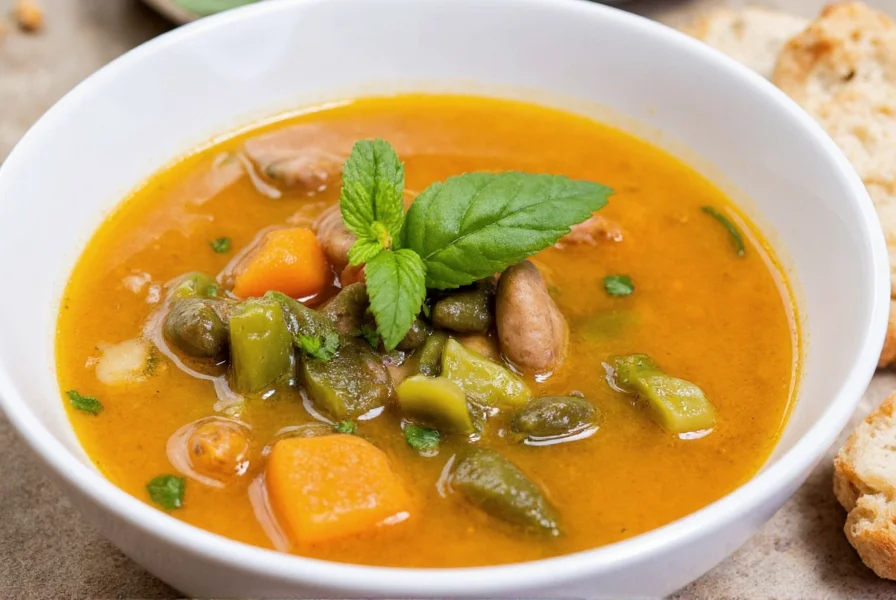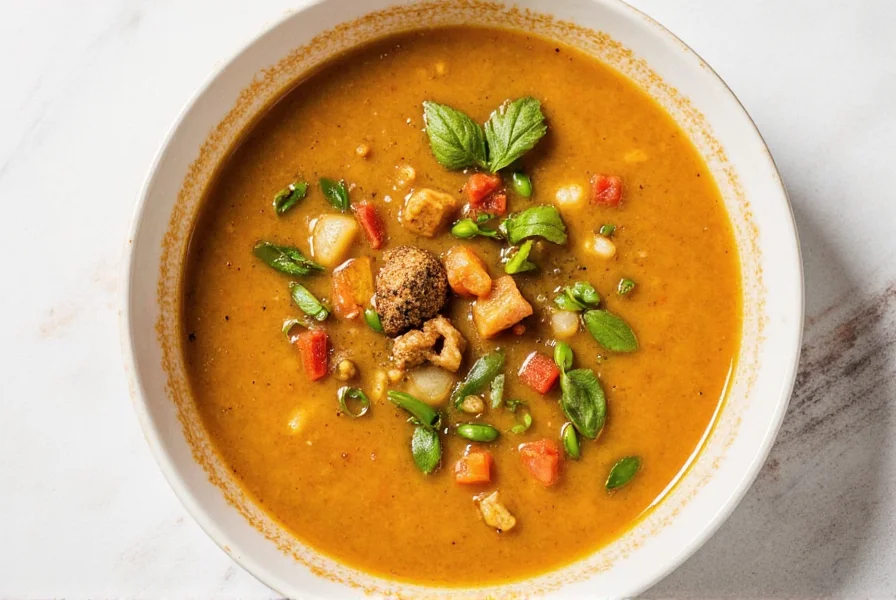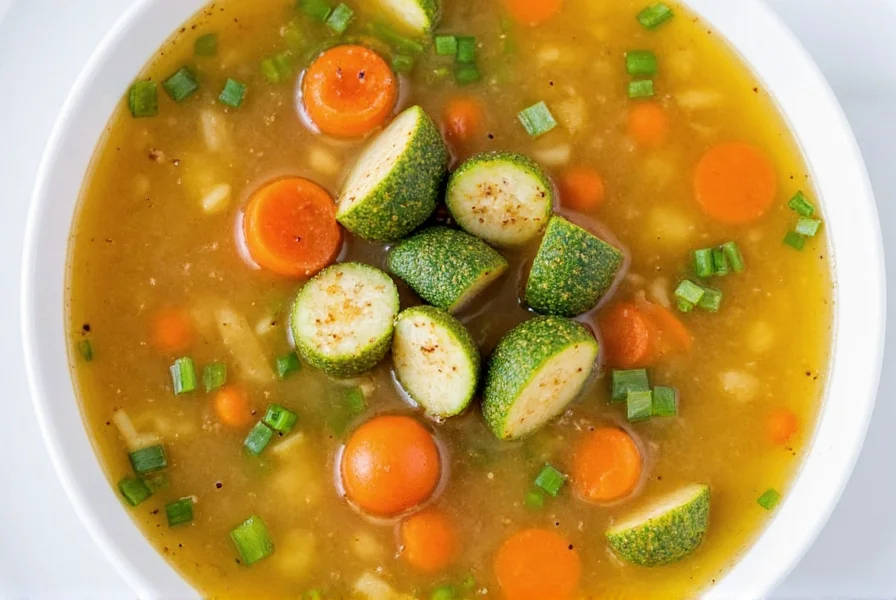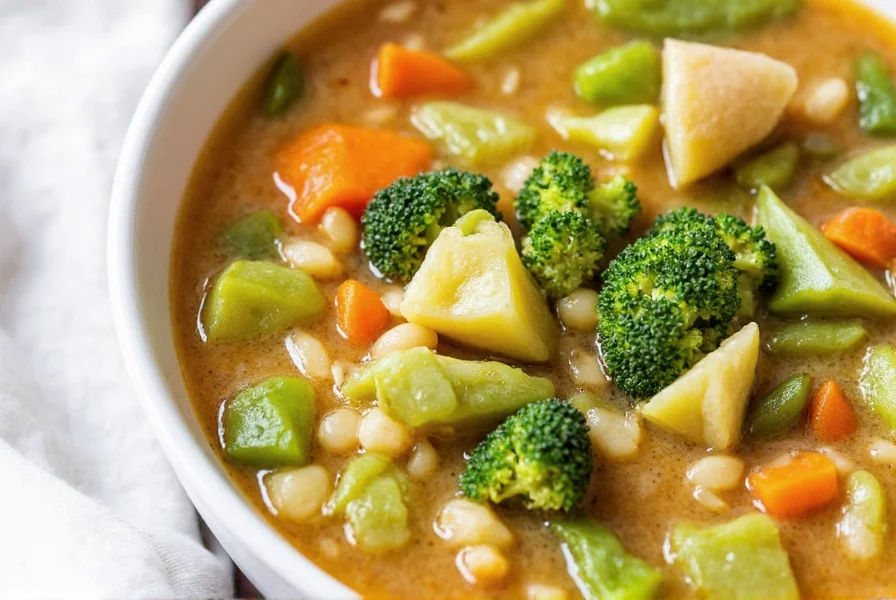Table of Contents
- Introduction: Transform Your Vegetable Soup Instantly
- The 7 Best Seasonings for Vegetable Soup (and Why They Work)
- Comparison Table: Which Seasoning Is Right for You?
- Pro Tips for Seasoning Like a Chef
- Buying Guide: How to Choose the Perfect Seasoning Mix
- Frequently Asked Questions About Seasoning Vegetable Soup
- Conclusion: Spice Up Your Soup Game Today!
Introduction: Transform Your Vegetable Soup Instantly
Vegetable soup can be bland without the right seasonings. Here are the top 7 seasonings that will transform your dish from ordinary to extraordinary, backed by professional culinary expertise. Whether you're a beginner or experienced cook, these seasonings deliver maximum flavor with minimal effort.

The 7 Best Seasonings for Vegetable Soup (and Why They Work)
1. Turmeric – The Golden Glow Boost
Turmeric isn't just for curries—it's a powerhouse of earthy warmth and anti-inflammatory benefits. In vegetable soup, it gives a subtle golden hue and pairs beautifully with carrots, sweet potatoes, and lentils. Pro Tip: Add 1/2 tsp with early cooking to release its full flavor.
2. Smoked Paprika – A Hint of Campfire Romance
If you're going for a rustic, hearty vibe, smoked paprika adds a deep, smoky note that mimics the flavor of slow-smoked vegetables. Great for root veggies or mushroom-based soups. Pro Tip: Use 1 tsp for medium heat; 1/2 tsp for subtle smokiness.
3. Fresh Thyme – Earthy Elegance in Every Spoonful
Fresh thyme is one of those herbs that quietly steals the show. Its piney, woodsy aroma enhances nearly any vegetable combination and works wonders in broth-based soups. Pro Tip: Add fresh sprigs 10 minutes before serving to preserve brightness.
4. Garlic Powder vs. Minced Garlic – The Age-Old Debate
Dried garlic powder offers convenience and a mellow sweetness, while fresh minced garlic delivers punchier, more immediate flavor. Depending on your cooking time and intensity level, either can shine. Pro Tip: Use powder early for even distribution; fresh garlic midway to avoid bitterness.
5. Bay Leaves – The Silent Stewards of Flavor
Bay leaves don't shout—they whisper. Toss a couple into your soup early on, and they'll infuse the entire pot with subtle herbal depth. Don't forget to fish them out before serving! Pro Tip: Use 2 leaves for 6 cups of soup; remove after 30 minutes simmering.
6. Lemon Zest – Brightness in Disguise
Sometimes your soup needs a wake-up call. A little grated lemon zest can cut through heaviness and bring a surprising brightness that elevates the whole dish. Pro Tip: Add zest at the very end for maximum freshness and aroma.
7. Umami Blend (Mushroom Powder + Soy Sauce) – The Fifth Flavor Express
Umami is the savory sensation our taste buds crave. Mushroom powder or a splash of soy sauce brings that umami richness, especially in vegan or vegetarian soups where meaty depth is missing. Pro Tip: Mix 1 tsp mushroom powder + 1 tbsp tamari for vegan-friendly umami boost.
| Seasoning | Flavor Profile | Best For | When to Add | Vegan-Friendly |
|---|---|---|---|---|
| Turmeric | Earthy, slightly bitter | Root vegetables, lentil soups | Early in cooking | Yes |
| Smoked Paprika | Smoky, rich | Roasted veggies, tomato-based broths | At start or as garnish | Yes |
| Thyme (fresh/dried) | Piney, herbaceous | Broth-based soups | Midway through cooking | Yes |
| Garlic (powder/minced) | Pungent, savory | All vegetable types | Fresh garlic late, powder early | Yes |
| Bay Leaf | Woody, herbal | Long-simmered soups | Start of cooking | Yes |
| Lemon Zest | Citrusy, bright | Lighter broths, creamy bases | At end for maximum zing | Yes |
| Umami Blend | Savory, rich | Vegan soups, mushroom dishes | At end for intensity | Yes (if using tamari instead of soy) |

Pro Tips for Seasoning Like a Chef
- Layer your flavors: Start with aromatics (onion, garlic), then add dry spices, followed by herbs toward the end.
- Don't forget acid: A dash of vinegar or citrus juice can balance out heavy flavors.
- Salt gradually: Taste as you go—salting at the end helps avoid over-seasoning.
- Toast dry spices first: Lightly toasting cumin or coriander seeds in oil before adding liquid boosts their fragrance.
- Use high-quality herbs: Fresh thyme or rosemary makes a big difference over old dried sprigs.

Buying Guide: How to Choose the Perfect Seasoning Mix
Not all seasonings are created equal. Here's what to look for when choosing the best options for your next veggie soup adventure:
1. Organic vs. Conventional
Organic seasonings are grown without synthetic pesticides and often have more intense flavor. Ideal for health-conscious cooks and foodies who love bold tastes.
2. Whole vs. Ground Spices
Whole spices (like cumin seeds or peppercorns) last longer and can be toasted for more depth. Ground spices offer convenience but lose potency faster once opened.
3. Salt Varieties
Try sea salt, Himalayan pink salt, or seasoned salts like herb-infused blends for added flair. Avoid overly processed table salt when possible.
4. Pre-Mixed Vegetable Blends
- Herbes de Provence – Floral and herby, perfect for Mediterranean-style soups.
- Italian Seasoning – Balanced blend of basil, oregano, and thyme.
- Vegetarian Bouillon Powders – Ready-to-use flavor bombs that save time.
| Product Name | Features | Best Use Case | Target Audience | Price Range |
|---|---|---|---|---|
| McCormick Culinary Italian Seasoning | Blend of basil, oregano, garlic, and fennel | Classic tomato-based vegetable soups | Home cooks and chefs alike | $8–$12 |
| Simply Organic Herbes de Provence | Organic lavender, rosemary, thyme blend | French-inspired or light broth soups | Health-focused cooks | $10–$14 |
| Rapunzel Vegan Vegetable Seasoning Salt | Nutritional yeast base, no MSG | Plant-based soups and stews | Vegans and vegetarians | $9–$13 |
| La Flor Smoked Paprika | Premium Spanish paprika, smoky and rich | Hearty soups with mushrooms or beans | Flavor enthusiasts | $15–$20 |

Frequently Asked Questions About Seasoning Vegetable Soup
What are the essential seasonings every vegetable soup needs?
While personal preferences vary, the most essential seasonings for vegetable soup include salt (to enhance natural flavors), black pepper (for mild heat), garlic (for depth), and bay leaves (for subtle herbal notes). Beyond these basics, smoked paprika adds smokiness, fresh thyme provides earthy complexity, and a touch of lemon zest brings brightness. For vegan soups, an umami boost from mushroom powder or soy sauce helps compensate for the lack of meat-based depth.
How much seasoning should I add to vegetable soup?
Start conservatively and build up gradually. For a standard pot (6-8 cups), begin with 1 teaspoon salt, 1/2 teaspoon black pepper, 1/2 teaspoon garlic powder, and 1-2 bay leaves. For dried herbs like thyme or oregano, start with 1/2 teaspoon; for fresh herbs, use 1-2 teaspoons. The key is to taste as you go—seasoning should enhance, not overpower, the natural vegetable flavors. Remember that flavors intensify as soup simmers, so it's better to under-season initially and adjust at the end.
When is the best time to add different seasonings to vegetable soup?
Timing matters for optimal flavor development. Add dried spices (turmeric, paprika, cumin) early in cooking to allow their flavors to mellow and integrate. Fresh herbs like thyme, parsley, or dill should be added in the last 10-15 minutes to preserve their bright flavor. Acidic elements like lemon zest or vinegar should be added at the very end to maintain their freshness. Bay leaves need time to infuse, so add them at the beginning but remember to remove before serving. Delicate ingredients like fresh garlic are best added midway through cooking to avoid bitterness from overcooking.
Can I use dried herbs instead of fresh ones in vegetable soup?
Absolutely, but with some important adjustments. Dried herbs are more concentrated than fresh—use about one-third the amount of dried herbs compared to fresh (so 1 teaspoon dried instead of 1 tablespoon fresh). Dried herbs also benefit from being added earlier in the cooking process to allow time for rehydration and flavor release, while fresh herbs shine when added toward the end. For vegetable soup specifically, dried thyme, oregano, and rosemary work particularly well as they withstand longer cooking times without losing flavor.
How do I fix an over-seasoned vegetable soup?
If your soup is too salty, add a peeled raw potato to absorb excess salt (remove after 15-20 minutes), or dilute with unsalted broth or water. For overly spicy soup, add a splash of cream, coconut milk, or a spoonful of sugar to balance the heat. If it's too acidic, a pinch of sugar or a small amount of baking soda (1/8 teaspoon at a time) can neutralize excess acidity. When fixing seasoning issues, make small adjustments and taste frequently—remember that some flavors mellow as the soup continues to cook and rest.
What's the secret to making vegetable soup taste rich and flavorful?
The secret to rich vegetable soup lies in layering flavors through multiple techniques: first, sauté onions, garlic, and celery in olive oil until golden to build a flavor foundation. Second, toast dried spices in the oil before adding liquid to unlock their aromatic compounds. Third, incorporate umami boosters like tomato paste (cooked until darkened), mushrooms, or a splash of soy sauce. Fourth, finish with a touch of acid (lemon juice or vinegar) and fresh herbs right before serving. Finally, allow your soup to rest for 15-30 minutes off heat before serving—this crucial step lets flavors meld and intensify.
Conclusion: Spice Up Your Soup Game Today!
There you have it—a full toolbox of seasoning secrets ready to rescue your vegetable soup from bland oblivion. Whether you're a weekend warrior in the kitchen or a culinary artist looking to refine your veggie game, the right seasonings make all the difference.
So next time you're simmering away, remember: it's not just about the veggies or the broth—it's about how you feel when you take that first spoonful. With the perfect spice mix, every bowl becomes a comfort hug in edible form.
Now go forth and season boldly. Your soup deserves nothing less than magical.










 浙公网安备
33010002000092号
浙公网安备
33010002000092号 浙B2-20120091-4
浙B2-20120091-4